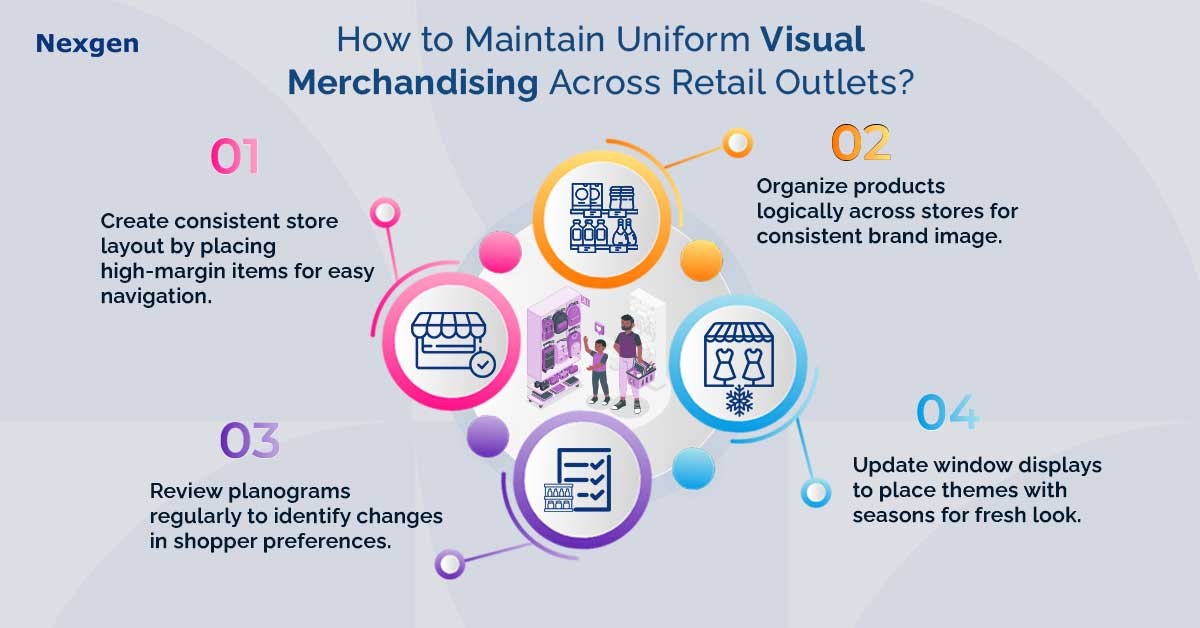One of the most challenging tasks in the retail industry, particularly in visual merchandising and merchandise management, is providing a consistent shopping experience across multiple locations. Each store must ensure a sense of familiarity that caters to the customer’s preferences. So, as a large retailer, how can you effectively navigate this delicate balance? The solution is shelf planning software such as planograms. More than just enticing displays, planograms are about strategic design. When done right, it improves the shopper’s experience, reinforces your brand image, and drives sales.
Planogram plays a crucial role in creating a captivating and consistent brand image across retail outlets. It is not just about arranging products on shelves; it is an art that requires strategic planning, creativity, and attention to detail. Maintaining uniform visual merchandising across retail outlets goes beyond mere aesthetics—it is about conveying your brand's identity and creating a consistent customer experience. By establishing clear brand guidelines, implementing consistent design layouts, and fostering regular training and communication, you can ensure that each retail outlet contributes to a cohesive brand image that resonates with customers and drives business success. In this blog, we will discuss three essential planogram in retail guidelines for maintaining uniform visual merchandising across retail outlets:

1. Develop a centralized planogram strategy
To achieve uniformity in planograms across multiple retail outlets, it is important to establish a centralized planogram strategy. This strategy serves as a blueprint that outlines the arrangement of products, shelving, and displays for each store. By having a single, comprehensive planogram template, you can ensure that the overall layout and product placement remain consistent, regardless of the location.
Standardize product placement: Designate specific areas for product categories, ensuring similar products are placed in the same locations across all stores.
Modular approach: Utilize a modular planogram approach, where sections of the planogram can be easily replicated or adapted to suit different store sizes and layouts.
Seasonal and promotional adjustments: Incorporate provisions for seasonal displays and promotional areas in the centralized planogram to maintain flexibility while adhering to overall uniformity.
2. Design shelf layout and fixture consistency
A uniform design layout and fixture placement contribute to a seamless shopping experience and help customers navigate through your store effortlessly. When customers can predict where to find specific products or product categories, they are more likely to spend time exploring and making purchases.
Fixture design: Use similar shelving units, racks, and display fixtures in all stores. This maintains a cohesive look and makes it easier for customers to recognize your brand's store design.
Color palette: Choose a uniform color palette that resonates with your brand. These colors should be used not only in product displays but also in signage, banners, and interior decor.
Traffic flow: Design aisles to guide customers along a specific path, leading them to high-traffic areas or featured displays. This controlled flow can enhance customer engagement and influence purchasing decisions.
3. Regular audits and updates:
Achieving uniform planograms is an ongoing effort that requires regular audits and updates. As product assortments change and customer preferences evolve, it is important to review and adjust the planograms accordingly with the help of analytical reports. Regular analysis of reports can help identify inconsistencies and provide opportunities for improvement.
Periodic review: Set a schedule for planogram reviews and updates to ensure that the layouts are still aligned with the store's needs and the brand's visual identity.
Data-driven insights: Analyze sales data and customer feedback to identify high-performing products and areas that may require adjustments in the planogram.
Collaborative approach: Involve store managers and employees in the audit process, as they can provide valuable insights into local preferences and customer behavior.
Overview of Nexgen POG
Nexgen POG is a robust and user-friendly cloud-based visual merchandising tool. It is designed for quick and efficient planogramming with minimal effort. Planogram in retail can be designed by easily dragging and dropping the products. The multi-device compatibility feature of POG allows you to obtain, share and edit planogram on any device, including your phone. It helps in designing store-specific planograms for increased product visibility and sales.
Get Your Free Trial Now!